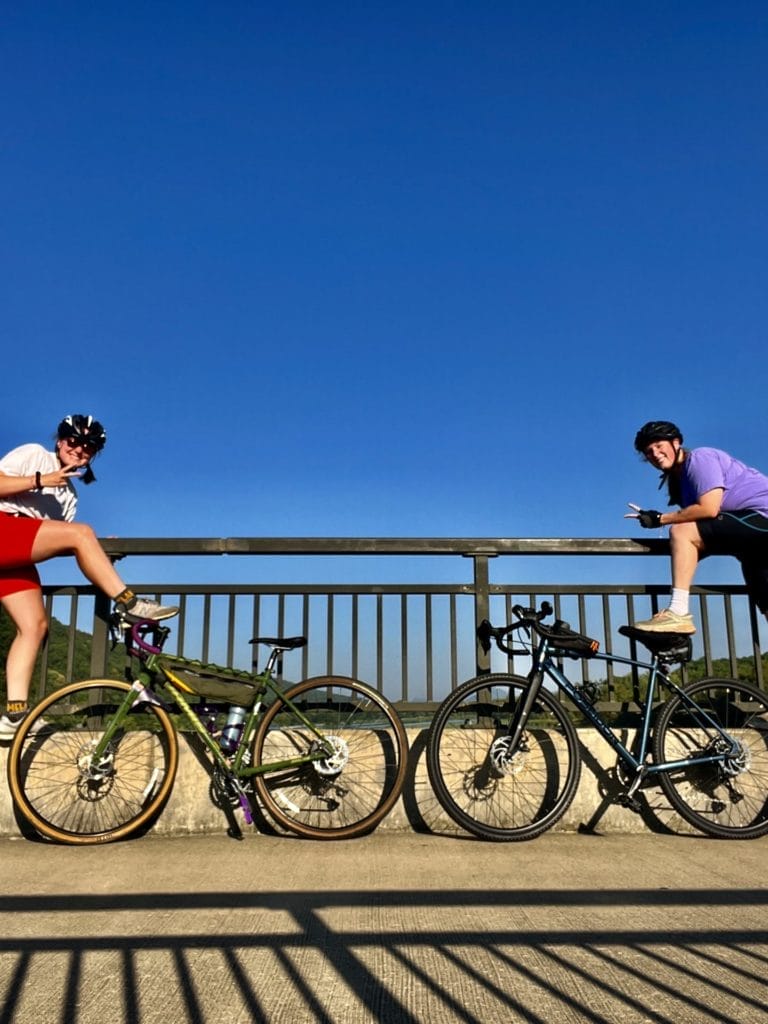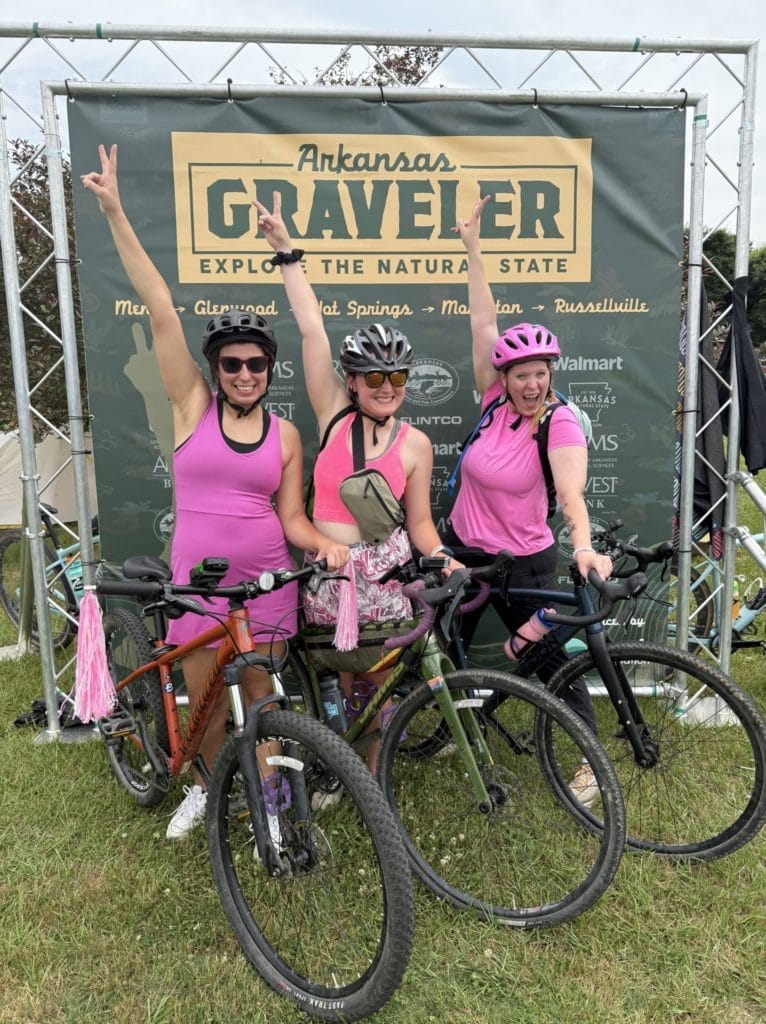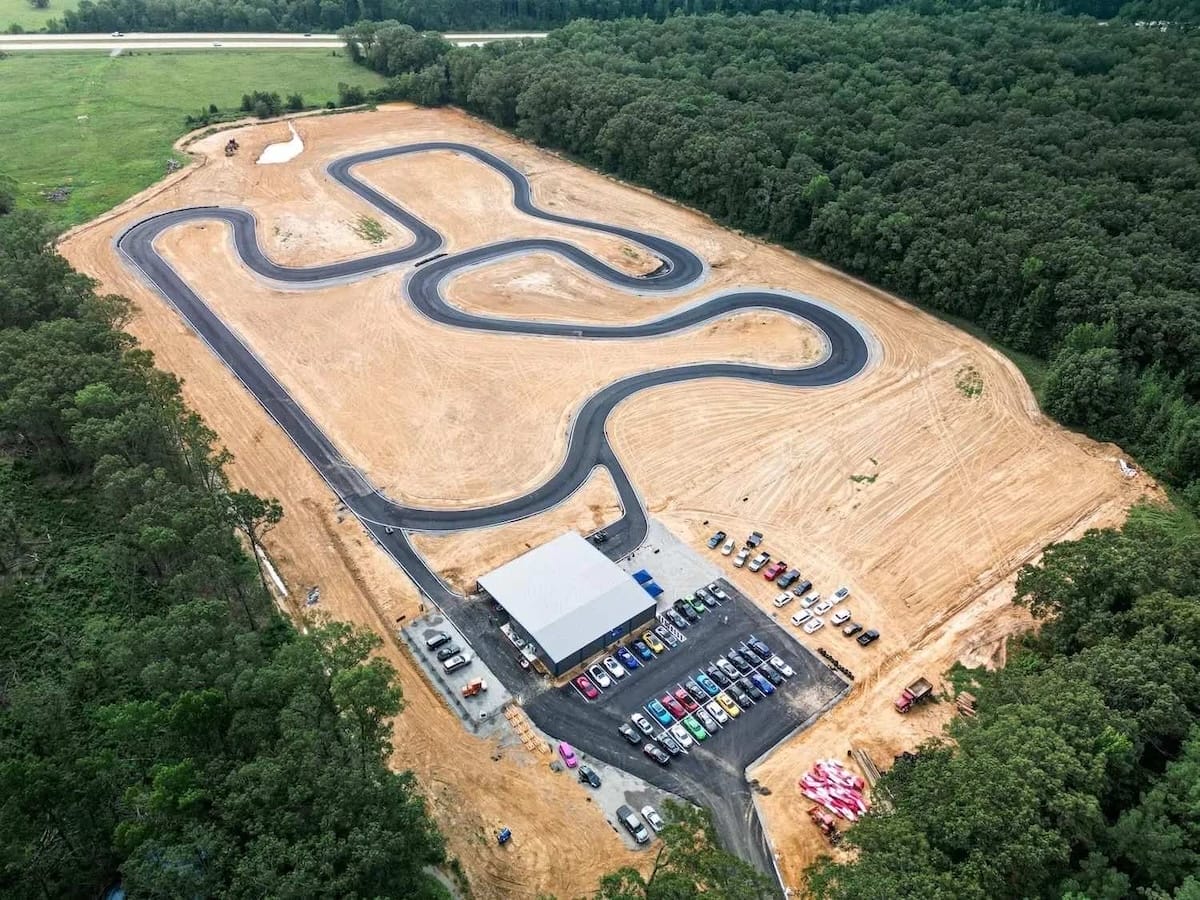

Uh oh...
It appears that you're using a severely outdated version of Safari on Windows. Many features won't work correctly, and functionality can't be guaranteed. Please try viewing this website in Edge, Mozilla, Chrome, or another modern browser. Sorry for any inconvenience this may have caused!
Read More about this safari issue.

In June 2024, my friend Cathy and I were fly fishing on the Mulberry River while staying at a cozy Airbnb in Ozone, Arkansas. We’d spent the morning catching smallmouth bass and planned to stop for lunch at the Oark Café. The day was already shaping up to be a good one.
On our way back, we noticed several highway signs that read, “Watch for cyclists – Arkansas Graveler in progress.” Curious, we researched what it was.
The Arkansas Graveler is a multi-day gravel cycling tour that crosses the state. In its inaugural year, the route stretched from Fayetteville to Jonesboro over five days. We were intrigued.
A few miles later, we passed a group of cyclists climbing up a large hill on their bicycles. It was hot. It was humid. It was the end of June in Arkansas. We saw the flashy bicycles and helmets and were immediately infatuated with the activity. Can we do the same thing?
Without much pause, we both hurriedly decided to begin our gravel bicycling journey. And we both immediately agreed that we had to do the Graveler in some capacity in 2025.

By August, we both had gravel bikes. I bought a Jamis Renegade from a friend, and Cathy ordered a Poseidon online. We quickly recruited our friend Tayler, who joined the team in December with a hardtail mountain bike.
We called ourselves the Graveler Barbies, and we got to work. Over the next several months, we spent hours training on gravel roads, dirt trails, and pavement. We researched what we could, but as beginners, there was a lot we had to figure out the hard way. From tire choices to hydration strategies, we learned through trial, error, and lots of regrouping.
One of the best parts? Doing it together. The camaraderie, encouragement, and shared effort made the process fun—even when it was hard.
If you’re curious about gravel biking in Arkansas, let our journey be your unofficial guide. We didn’t start out as experts, and you don’t have to either. We’re learning as we go—and now, we’re taking you along for the ride.

Following the Fernweh: Carrie’s BFF Guide to Gravel Cycling in the Natural State
1. Start with the bike you have, but a gravel bike really makes a difference.
You can ride on almost anything, but for long gravel distances, a gravel bike is designed for the job. It looks like a road bike with knobby tires and no suspension—perfect for rougher roads.
You can find used bikes on Facebook Marketplace for $500, or invest in something new from your local bike shop. Both work! Tayler, for example, needed a multi-purpose bike and rode the Half-Grav on her hardtail mountain bike—successfully!
I ride a Jamis Renegade.
Cathy uses a Poseidon X Ambition Dropbar.
Tayler rides a Specialized Rockhopper.

2. Gear up smart from the beginning.
There are a few must-have items that aren’t obvious until you’re already out there:
A rear blinking light for visibility and safety, especially in low light.
A front headlight for early or late rides. Mine has made a huge difference.
A phone mount allows you to check maps, take calls, or change music without stopping.
3. Padded shorts aren’t optional.
I resisted, but after a painful 35-mile ride with my dad, I gave in—and now I won’t ride without them. I’ve bought pairs from Parkside Cycle in Hot Springs and Amazon. Get what works for your budget!
4. Always drive your route before riding it.
On December 31, 2024, we tackled a 45-mile loop at Lake Sylvia we found online. It turned out to be a mountain biking route—not ideal for gravel bikes. After four hours and only 20 miles in, we had to call for help. Lesson learned: drive your planned route first to assess terrain and difficulty.
5. Make a training plan and actually follow it.
I used ChatGPT to help build a personalized cycling training plan for the Arkansas Graveler. I gave it my goals, and it helped me structure a schedule around terrain and endurance. I didn’t follow it perfectly, but I still finished the ride. Train seriously, and it’ll pay off.

6. Skip the trainer—just ride outside.
Riding in all weather conditions helped me mentally and physically prepare for the Graveler. I trained in everything from 25°F cold to 100°F heat. The elements made me more confident. Embrace the discomfort—it builds grit.
7. Ride with friends whenever you can.
Gravel biking is more fun with your people. Cathy, Tayler, and I would meet up monthly, often riding the loops at Lake Sylvia near Little Rock. The shared miles kept us motivated and accountable.
8. Elevation training is mostly mental.
To prep, I signed up for the final Ouachita Challenge—a 62-mile ride with over 5,000 feet of elevation gain. I was dead last and almost quit, but encouragement from the sag vehicle and my people kept me going. I pretended the hills were flat and kept pedaling. It was one of the best, hardest days on a bike I’ve had.
9. Add strength training to your routine.
I didn’t prioritize this, but I wish I had. Lifting and core work would’ve made long rides easier and recovery faster. I’ve since added it to my training plan.

10. Enjoy it all—the fun and the frustration.
The Arkansas Graveler was an emotional, empowering, and unforgettable experience. I proved to myself that I could accomplish something incredibly challenging and emerge with a smile. Lean into the challenges—they make the finish line feel even sweeter.
We do the work.
You check your email.
Sign up for our weekly e-news.
Get stories sent straight to your inbox!









Like this story? Read more from Carrie Balkman
Are you searching for a weekend getaway that blends world-class trout...
Downtown Hot Springs is buzzing with energy, charm, and now a hint of...
If you plan a fly-fishing trip in Arkansas, you’re in for a treat! This...
Join the Conversation
Leave a Comment